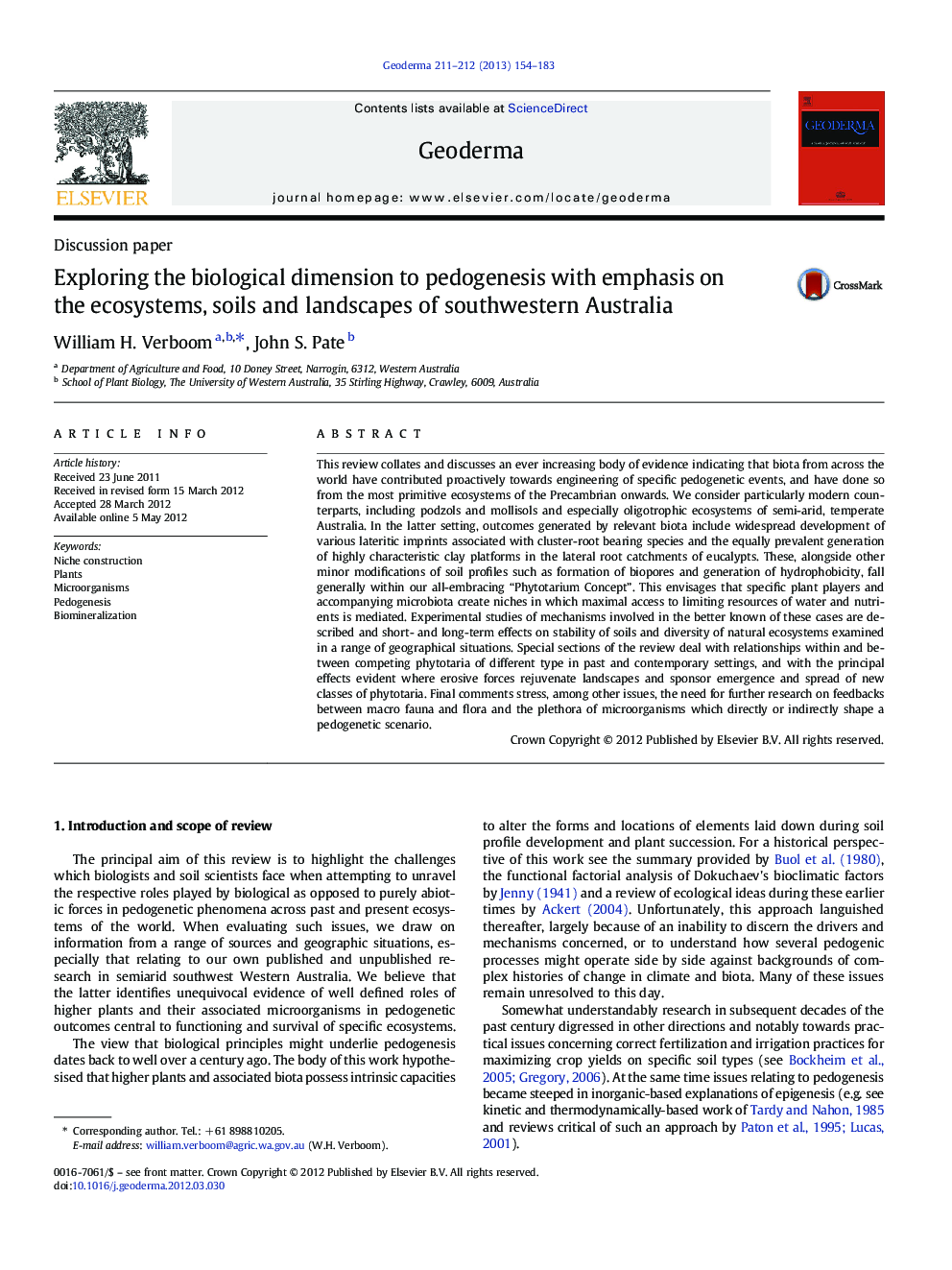| Article ID | Journal | Published Year | Pages | File Type |
|---|---|---|---|---|
| 4573462 | Geoderma | 2013 | 30 Pages |
This review collates and discusses an ever increasing body of evidence indicating that biota from across the world have contributed proactively towards engineering of specific pedogenetic events, and have done so from the most primitive ecosystems of the Precambrian onwards. We consider particularly modern counterparts, including podzols and mollisols and especially oligotrophic ecosystems of semi-arid, temperate Australia. In the latter setting, outcomes generated by relevant biota include widespread development of various lateritic imprints associated with cluster-root bearing species and the equally prevalent generation of highly characteristic clay platforms in the lateral root catchments of eucalypts. These, alongside other minor modifications of soil profiles such as formation of biopores and generation of hydrophobicity, fall generally within our all-embracing “Phytotarium Concept”. This envisages that specific plant players and accompanying microbiota create niches in which maximal access to limiting resources of water and nutrients is mediated. Experimental studies of mechanisms involved in the better known of these cases are described and short- and long-term effects on stability of soils and diversity of natural ecosystems examined in a range of geographical situations. Special sections of the review deal with relationships within and between competing phytotaria of different type in past and contemporary settings, and with the principal effects evident where erosive forces rejuvenate landscapes and sponsor emergence and spread of new classes of phytotaria. Final comments stress, among other issues, the need for further research on feedbacks between macro fauna and flora and the plethora of microorganisms which directly or indirectly shape a pedogenetic scenario.
► Plants and associated biota have been continuously proactive in soil formation. ► Niche construction may generate highly specific changes in soil profiles. ► Pedogenetic outcomes typically maximise access by plants to abiotic resources. ► Interactions of ecosystems may result in successive overprinting of pedogenetic signatures. ► Evolution of soil and topographies bears hall marks of shifting biotic inputs.
